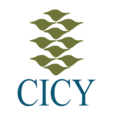Por favor, use este identificador para citar o enlazar este ítem:
http://cicy.repositorioinstitucional.mx/jspui/handle/1003/3346| Mangrove ecosystems as fundamental habitats for fish from the Mexican Caribbean: An evaluation between a conserved and restoration zone | |
| DANIEL ARCEO CARRANZA LESLI CECILIA HERNANDEZ MENDOZA CLAUDIA TEUTLI HERNANDEZ JORGE ALFREDO HERRERA SILVEIRA José Adán Caballero Vázquez FRANCISCO XAVIER CHIAPPA CARRARA | |
| Acceso Abierto | |
| Atribución-NoComercial-SinDerivadas | |
| https://doi.org/10.1016/j.rsma.2024.103650 | |
| MANGROVE RESTORATION MARINE FISHES NURSERIES JUVENILE HABITAT | |
| Mangrove ecosystems can function as a habitat for many juvenile marine fish species, with provisions of food and refuge. Seemingly, these ecosystems have been extensively reduced due to anthropogenic activity, as is widespread land use and road construction along the coastline. Nonetheless, much needed restoration efforts have increased tremendously over time. This study analyzes fish community, and the manner in which habitats in the mangrove ecosystem are used, comparing two mangrove zones, a conserved zone (healthier state) and one undergoing restoration. Hydrologically, no significant differences were registered (KW p>0.05). Of the 24 species registered, marine species were dominant in the conserved zone and estuarine species dominant in the restoration zone. Juvenile fishes were more abundant in the conserved mangrove zone, with a higher proportion of adults found in the restoration zone. According to Hutcheson's t test, fish diversity showed significant statistical differences between sites combined with distinct climatic seasons. The Canonical Correspondence Analysis (CCA) indicated a relationship between secondary freshwater species Floridichthys polyommus and Cyprinodon artifrons and greater salinity and temperature, whereas marine species had a higher relationship with well oxygenated sites. A high number of marine fish species in juvenile stage in the conserved area may relate to mangroves functioning as nurseries. This can serve as a useful indicator by managers taking an integral approach to evaluate and monitor present and future mangrove restoration programs and pathways. © 2024 The Authors | |
| 2024 | |
| Artículo | |
| Regional Studies in Marine Science, 77, 103650, 2024. | |
| Inglés | |
| ECOLOGÍA VEGETAL | |
| Versión publicada | |
| publishedVersion - Versión publicada | |
| Aparece en las colecciones: | Artículos de Investigación Arbitrados |
Cargar archivos:
| Fichero | Tamaño | Formato | |
|---|---|---|---|
| 2024_D._Arceo_Carranza.pdf | 5.25 MB | Adobe PDF | Visualizar/Abrir |
